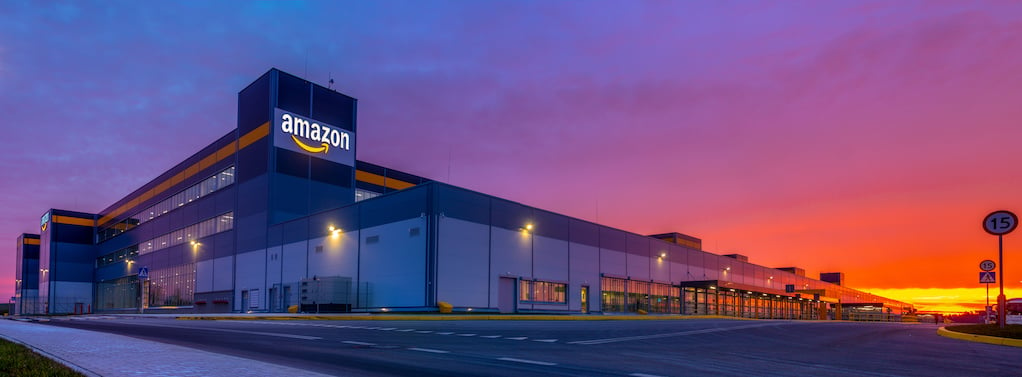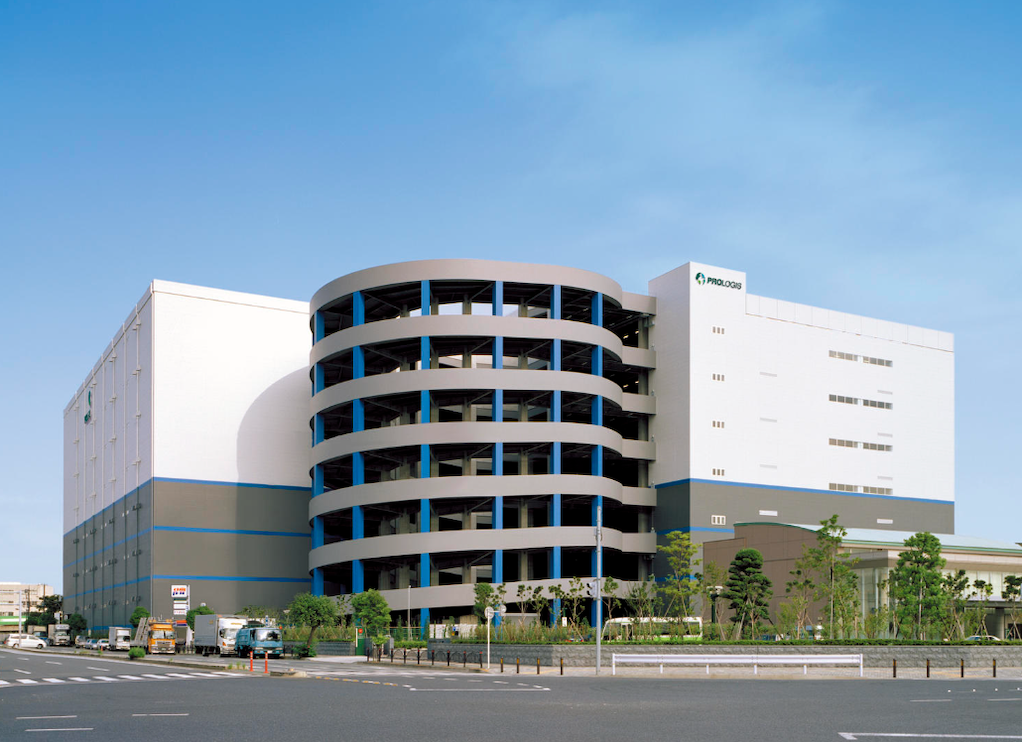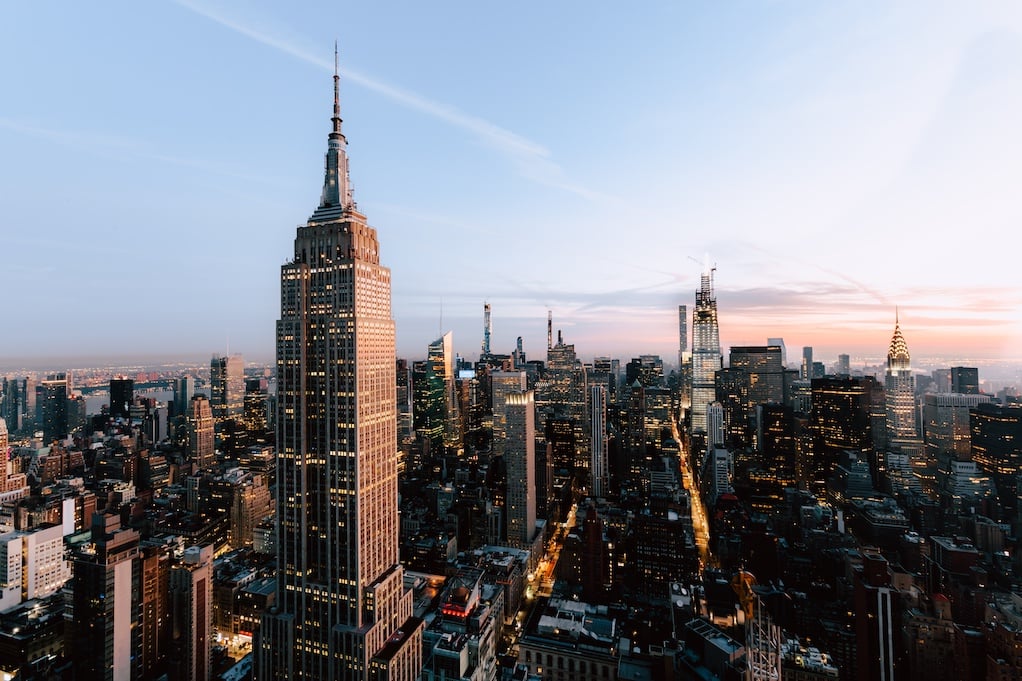While the office sector has withstood blow after disruptive blow for the last two years, not all commercial real estate is feeling the same pain. As offices remain empty at record highs, on the inverse, warehouse vacancies have reached record lows.
As a result, developers are getting more creative with the land they have. New efforts to circumvent land scarcity by constructing multi-level warehouses are being called the wave of the future. But is it true? Will multi-level warehouses become the new American standard? Decide for yourself.
Learn more about where warehouse demand has been, where it’s expected to evolve in the future, and everything in between.
Pressure on Warehouse Demand
While COVID hit offices hard, it applied different pressure on the e-commerce market. With limited in-person shopping alternatives, online retailers like Amazon felt the brunt of demand. This came at a time when online shopping was already eclipsing the traditional retail experience of malls and shopping centers. According to Prologis, global e-commerce retail sales were expected to hit $4.9 trillion in 2021. Cut and dry: Online shopping has taken over and shows no sign of ending.

This adaptation shifted power into the hands of those who could promise fast, effective delivery. Companies raced to secure this promise with increased pressure on the number and functionality of their warehouses. As such warehouse demand skyrocketed. According to Globe ST “The transaction volume for industrial warehouses increased by 11% year over year in the second quarter.”
But- does what go up also have to come down?
Many fear that the warehouse explosion has gotten too big for its britches and is doomed to drop. This is especially pertinent because as we leave the pandemic, Amazon has begun to freeze its plans for warehouse expansion. This move has many experts wondering whether this represents the beginning of the end of warehouse popularity... but, not so fast.
Warehouse Rents Still Expected to Climb
The persistent demand is being reflected in climbing rent rates. In fact, warehouse vacancies have reached 27-year lows, according to theRealDeal. So not only are premium warehouses harder to find, they are exponentially more expensive when they are available. However, with a looming recession, demand is expected to decrease. Yet, according to GlobeSt, “This rent growth is expected to continue in 2023 as the demand for distribution space, coupled with higher debt and construction costs, will maintain the pressure on base rental rates. From an investment perspective, there remains liquidity and motivated capital on the buy-side as net lease industrial assets remain in high demand and continue to grow as a favored asset among investors.”
Looking to find your next warehouse space? Enroll in our free warehouse tour checklist video course today!
Creative Warehouse Construction
With all this explosive growth, it is logical to wonder where the future of warehouse space will grow. Currently, the demand is close to outpacing the supply- and quickly. As a result, developers are rushing to expand, and offer those who wish to lease or buy warehouse space the ability to do so. Part of this initiative means that the construction and layout of these new projects are getting more creative. In order to fully optimize the square footage of its property, Prologis has put forth that the future of warehouses is multi-story.
 Image Source: Prologis
Image Source: Prologis
Multi-story warehouses aren’t necessarily new. They are common throughout Asia where chronic land shortages and building restrictions are the norm. However, they are still novel to the U.S. Prologis recently constructed the country’s first multi-level industrial warehouse in Seattle. The 590,000 square feet facility includes office, manufacturing, and warehousing space.
The cutting-edge facility is three levels, with the first two floors dedicated to fulfillment. It is supported by elevators, ramps, equipment rooms, and stair towers that make multi-story work possible. It is garnering attention around the world as the first (of many) multi-level warehouses on American soil. But does this mean that they will become the new standard?
Multistory Warehouses Bring Multifaceted Problems
Multi-level warehouses are not poised to overtake traditional warehouse facilities anytime soon, but they may become more common in metropolitan areas. Building vertically allows developers to fully take advantage of the space they have and circumvent challenges with disposition. Land scarcity has been a prolonged issue in cities, but as the demand for quick delivery persists, efficient warehouse spaces are still needed. As such, the flagship multi-story warehouse in Seattle has shown other cities that such a project is possible. Currently in New York, there are several multistory buildings under development in Brooklyn, Queens, and the Bronx.
However, multi-story warehouses are still complicated. Not only are they more expensive to plan and build, but there are other issues with safety codes and structural support. There are extensive challenges with earning approval for construction (from codes to the court of public opinion). If you do climb impossible hurdles to get it approved, then you have to deal with the cost.
Freight Waves estimated that,
|
“Building a two-story structure can cost $150 per square feet more than the traditional single-level facility because of higher material and construction costs that come with double-decking.” |
Expensive and cutting-edge construction obviously demands premium rents. This is another reason why multi-story warehouses may take years before they are seen more commonly throughout the United States. For now, only metropolitan areas, where urban land availability makes vertical building more necessary, seem to be an option for this contemporary construction. According to GlobeST, “Currently, only New York, Boston, and Seattle can command rents high enough to make multistory investments attractive, with Chicago and Philadelphia the most likely markets to rise to this level anytime soon.”

So, there you have it. While multi-story warehouses represent a possible solution for warehouse demand, they are not without their own issues. However, with multiple multistory warehouses under construction, the process will likely become smoother as more facilities are finished in years to come. So, they likely will become more common but only time will tell if multi-story warehouses are the industrial buildings of the future. But for now, they represent an exercise in commercial real estate ingenuity and an important step around land scarcity challenges.
Find Warehouse Solutions with a Tenant Rep
Commercial real estate trends are moving through the marketplace at record speed. We don’t blame you if it feels impossible to keep up. Luckily, our job is to leverage market intelligence to stay on top of trends and find CRE solutions, so you don’t have to. As true Tenant Reps, we empower our corporate clients to do the job the best they can by saving them money and time on CRE transactions.
We know how big a decision it is to upgrade or adjust your warehouse utilization. So, get help from a team that understands. At iOptimize Realty® we are true Tenant Reps with 30+ years of experience directing commercial tenants to their optimal CRE solutions. Whether this means relocating, renegotiating, or improving your space utilization- we have seen it all and are prepared to work with any unique CRE need.
Warehouse space is evolving quickly. So, don’t waste any more time. Learn everything you need to know about optimal warehouse locations in “What is the Right Warehouse Location? 6 Considerations”
If you’re ready to start saving money and making the right decisions, talk to an expert today.









